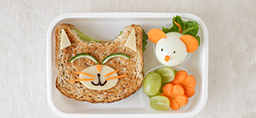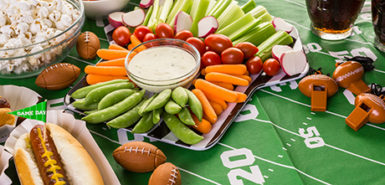
By the time your kids come home from school each day, they’re often famished.
It’s been more than four hours since their lunch, so a snack is pretty important to them at that point.
They hit the door at 4 p.m. and immediately declare, “I’m hungry.”
But that suddenly puts mom, dad or the babysitter in a tricky spot: How do you feed a hungry child when dinner is only an hour or so away?
Feed them too little, they’ll relentlessly pester during dinner preparations. Feed them too much, they won’t eat dinner.
Successful snacking is much more than having a bowl of fruit available on the counter or keeping chips in the cupboard. It takes thought, preparation and a good understanding of your kids.
Know the schedule and your child
School schedules vary when it comes to lunchtime.
Your children may eat lunch anytime from 10 a.m. to noon or maybe after. So depending on when lunch is served, and when your children arrive back home, they could be anything from slightly hungry to completely ravenous.
A small, light snack will work just fine if your children aren’t that hungry or if dinner will be offered soon. They’ll need something a bit more substantial to tide them over longer or to silence a growling stomach.
Each child’s preferences and styles vary.
The lunch offered at school may have been something they didn’t like, so they didn’t eat much.
Or maybe you have a child who seems to take forever to eat the smallest amount. Lunchtimes are usually pretty short—arguably too short—and they often feel rushed. A slow-eating child will probably be a lot hungrier after school.
Stock your kitchen
What’s available and easy to eat is usually what gets eaten, so keep the less healthy foods out and keep the healthy foods stocked and prepped.
This is especially true if your kids come home and need to make their own snacks.
It’s always a good idea to set some ground rules with your kids if you won’t be there to help them navigate the snack attack. Show them the foods they’re allowed to have, and how much.
I spoke to one family that resorted to locking food in a bedroom closet because the kids would come home from school and raid the kitchen. Once they set some kitchen rules about which foods are OK for snacks and when, the bedroom was no longer needed as a food jail.
Snack well
So what are the best snacks to offer children?
The simple recipe is to pair at least two food groups and include some protein for a satisfying snack.
Kids these days are lacking fruits and vegetables in their diets, so use snacks as a way to add more. This could be dried fruit and nuts, peanut butter and apples, raw veggies with hummus or a smoothie.
Grains make great snacks too, but go for whole grains like whole grain cereal, whole wheat crackers or a whole wheat English muffin.
Dairy foods like milk, cheese and yogurt are perfect because they have protein and carbohydrates. Use yogurt alone or as a parfait, or try whole grain crackers with cheese.
The snack ideas are really endless and the internet is loaded with great suggestions. Some are as simple as adding toy pirates to the guacamole dip and giving it a cool name like Pirate Ship Dip (we all know kids eat things that have cool names).
If you enjoy cooking, others involve a bit more time and energy. Check out the ideas on Pinterest, Martha Stewart and SuperHealthyKids.
Easy after-school snack ideas:
- Popcorn and dried fruit
- Veggies and hummus
- Cheese stick and apple slices
- Smoothie
- Yogurt parfait
- Eggs on toast
- Quesadilla
- Fruit and cheese kabob
- Salsa or guacamole and baked chips
- Trail mix
- Soy nuts and dried fruit
- Almond butter between apples slices
- Peanut butter and jelly pinwheels
- Baked sweet potato fries
- Oatmeal and fruit
- Cereal and milk
- Peanut butter sandwich
- Bagel pizza
 /a>
/a>
 /a>
/a>
 /a>
/a>